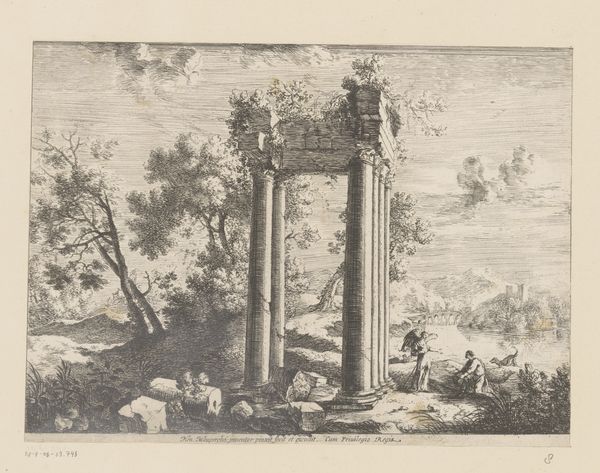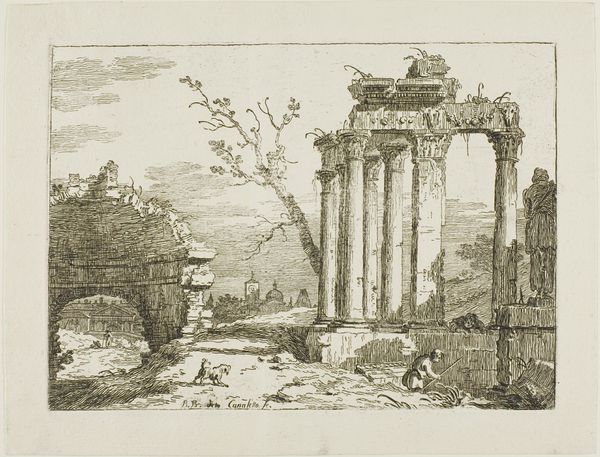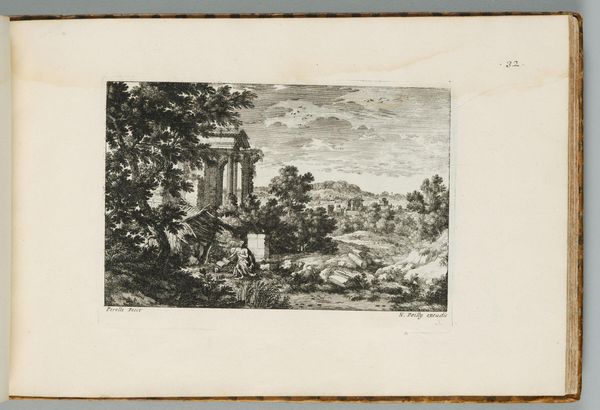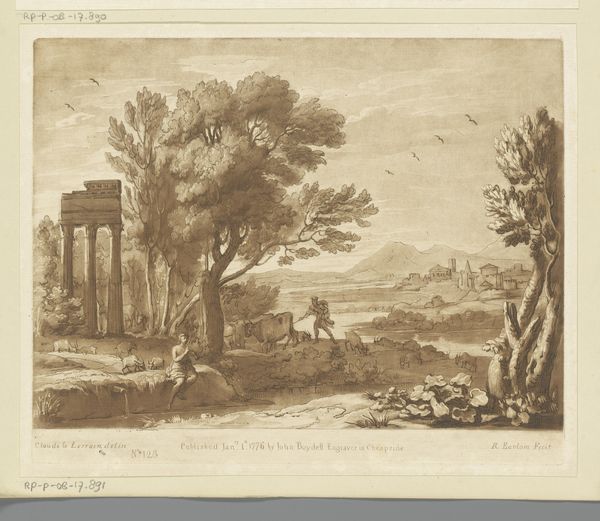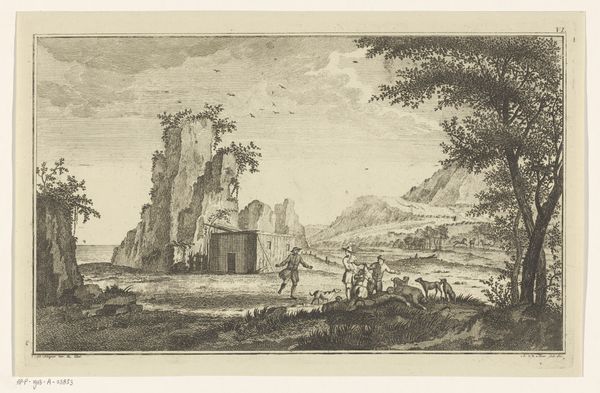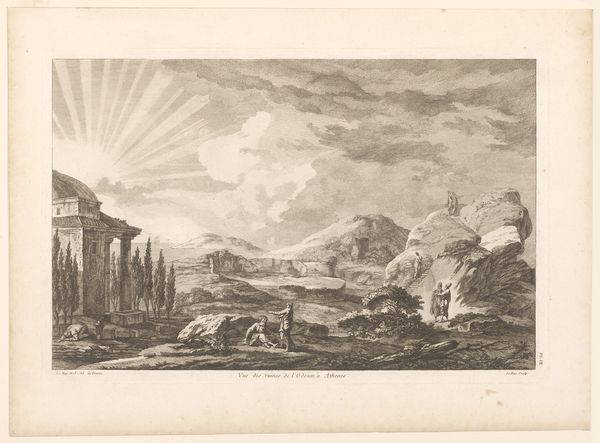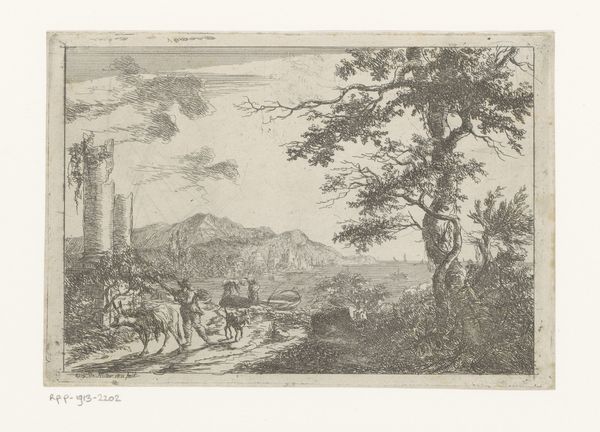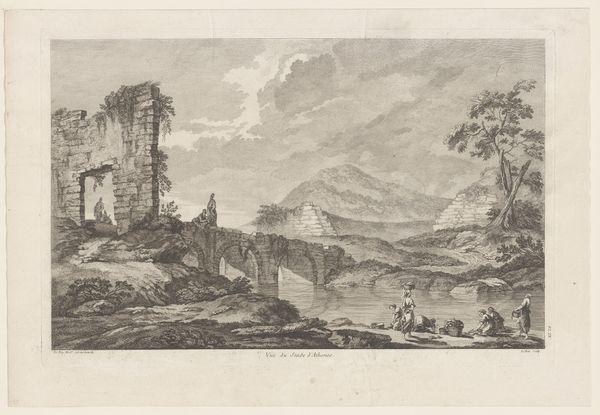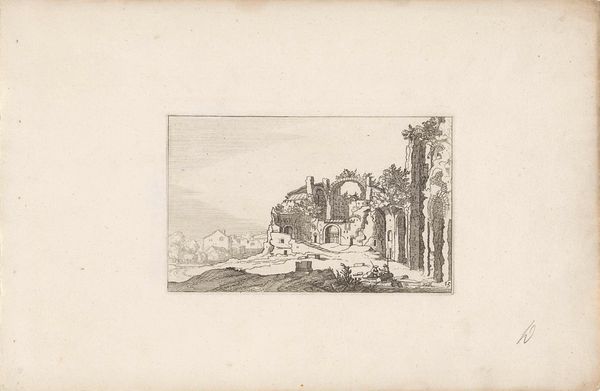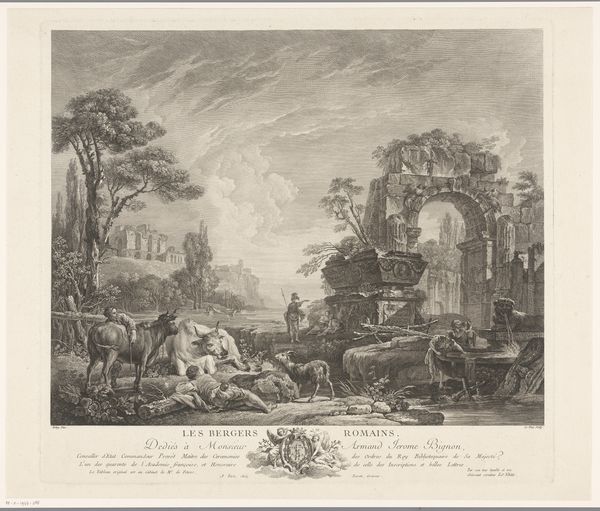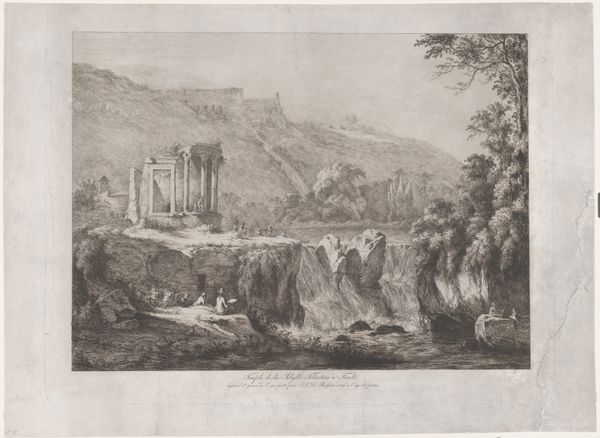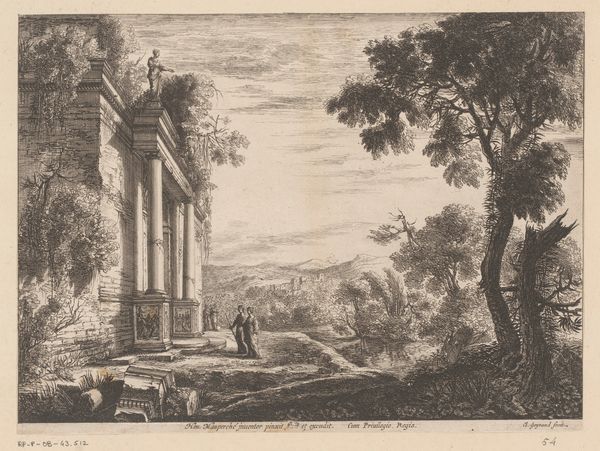
print, etching, engraving
#
baroque
# print
#
etching
#
old engraving style
#
landscape
#
classical-realism
#
form
#
pencil drawing
#
line
#
history-painting
#
engraving
Dimensions: height 304 mm, width 460 mm
Copyright: Rijks Museum: Open Domain
Editor: Here we have "View of a Ruin in a Landscape" an etching by Jacques Philippe Le Bas from 1758. I’m immediately struck by the contrast between the ruined, classical architecture and the rather lively figures scattered throughout the landscape. It’s an odd juxtaposition. What catches your eye in this piece? Curator: Primarily, the relationship between form and decay commands my attention. Notice how the sharp lines and precise details of the architecture, typical of classical realism, are deliberately juxtaposed with the organic overgrowth and the fragmented state of the ruin. Do you perceive how this contrast shapes the composition? Editor: I do see how the straight lines of the columns emphasize the irregular, broken edges of the ruins. It’s a deliberate choice, then? Curator: Precisely. The artist directs our gaze not merely at a historical scene but also towards a meditation on the transience of human endeavor. Note, too, how the etching technique itself—the precise application of line—contributes to this dialogue between permanence and impermanence. Editor: So, the medium itself is part of the message? Curator: Indeed. The calculated lines and formal structure create a visual argument, if you will, about the nature of time and history. Editor: I see it now. The details are carefully arranged, but create a sense of deliberate decay. Thank you for helping me unpack it! Curator: You’re most welcome. Exploring art through its formal properties opens new avenues for understanding its complex relationship with its themes.
Comments
No comments
Be the first to comment and join the conversation on the ultimate creative platform.
